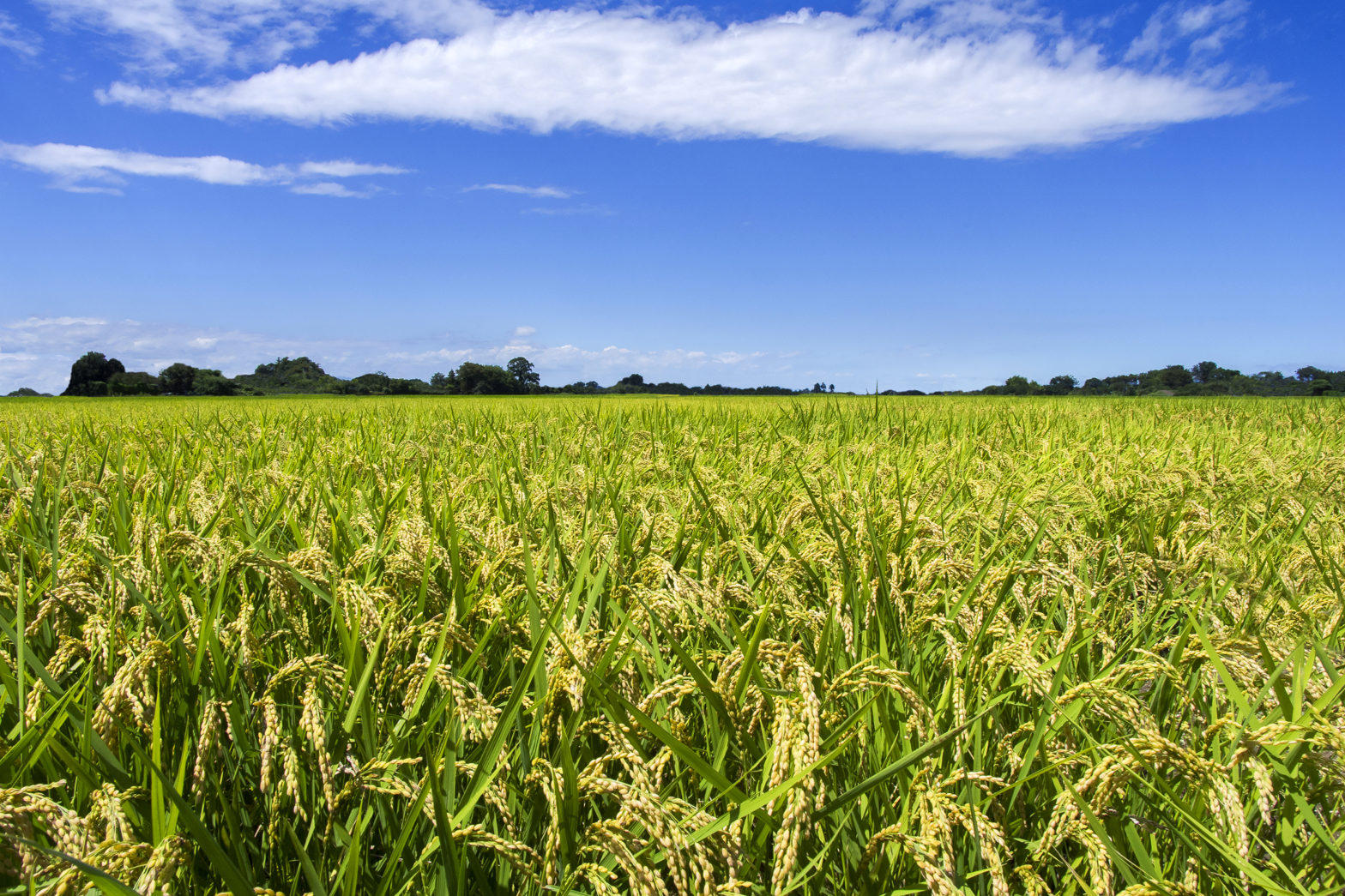Sake production is very complicated. The process is somewhat similar to that of beer because of the inevitable use of enzymes for saccharification (converting from starch to glucose). However, there are several differences between beer, sake, and wine production.

- Rice harvest
Several different rice varieties are used in sake production. Yamadanishiki is the most famous sake specific rice variety. The harvest season generally commences in October.

2. Rice polishing
After harvesting, rice growers bring their rice to Japan Agricultural Co-operatives (JA). JA inspects the rice, assesses the rice quality and rates it. Rated rice is then brought to a polishing center and polished to the individual requirements of each brewery. Sake breweries do not generally own or manage rice fields and rely on rice growers for the early parts of production. However, to control the quality of sake through control of component ingredients, some sake breweries have recently begun managing their own rice fields.
Polishing removes the outer part of rice, the proteins, and oils of which would diminish the taste of sake. The polish ratio is determined by how much of the inner part remains. If 30% of the outer part of rice is removed, 70% remains, giving it a 70% polish ratio. This ratio is a deciding factor in the categories of sake.

3. Rice washing and soaking
The process of washing and soaking sounds simple, but this very important process is a major factor in the quality of the sake. Washing removes the rice bran which is produced when polishing, which would otherwise negatively affect the end flavor.
Soaking is one of the most nerve-wracking processes for brewers. The water absorption of rice decides the quality of the koji and even one second too long can be disastrous. That is why some sake breweries still use a stopwatch to meticulously measure the process.


4. Rice steaming
There are two purposes of steaming the rice. Steamed rice is around 5,000 times more easily saccharified than raw rice. In another word, saccharification of raw rice is just 0.02% that of steamed rice.
Secondly, this process gives more moisture to rice, which is essential for the next step of sake production: koji.


5. Koji production
In the context of sake production, koji means the steamed rice propagated with koji fungus. These koji spores provide enzymes that convert starch into fermentable sugar (glucose).
Generally speaking, the quality of koji is the most important factor which decides the quality of sake.



6. Starter
At this stage, steamed rice, and koji, and water are mixed in a small container, then yeast is added.
The koji enzymes break down the steamed rice starch to sugar, which is then converted to alcohol by the yeast. As this occurs, the yeast multiplies. Since sake can easily be spoiled by micro-organisms, starters are maintained in a yeast-rich environment for 14 days to a month, to provide resistance against spoilage.

7.Moromi
When the starter is ready, the liquid is removed to a bigger tank. Water, steamed rice koji are added to create the moromi.
Again, glucose is converted from starch by enzymes. Yeast converts glucose to alcohol at the same time. This decant-and-add process occurs three times (the “three-stage addition”) over four days.
Yeast cannot survive in a high sugar environment and is not well resistant to the alcohol it produces.
Thanks to this three-stage addition, the yeast adjusts to the higher sugar and alcohol environment, they can propagate and produce alcohol.
This process is unique because fermentation and saccharification are carried out in parallel.
That is why the production method of sake is called “Multiple parallel fermentation” compared to wine’s single fermentation. After the three-stage addition, fermentation is carried out for 24 to 31days.

8. Pressing
If the sake is in the non-Junmai (rice with spirits) category, distilled alcohol is added before pressing.
There are several ways to press sake. One of the most common methods, ‘Yabuta’, is named after a company that produces pressing machines. Pressing takes about two days to fill the Yabuta and squeeze the contents.
9. Racking/Filtering
After pressing, the liquid is kept for 7 – 10 days in a tank to separate out the sediments, then is filtered through active charcoal. Active charcoal removes not only any remaining sediment but also any undesirable aroma and color. However, it removes desirable aromas as well. For this reason, non-filtered sake has been gaining popularity.
10. Pasteurization
Although sake is commonly pasteurized twice (after filtering, then just before bottling), there are specific sake categories that are either non-pasteurized or only pasteurized once. Normally pasteurization is done at 150⁰F / 65⁰C℃.
11.Storage / Blending
Sake is kept in a tank at 28.4 to 59⁰F(-2 to 15⁰C)for between six months to one year. Then the sake is blended to level the quality of sake in each tank.
12. Adding water
Water is added to the sake to reduce the alcohol content and make it more palatable. The sake before adding water has 17-20% alcohol by volume (abv) which is considered to be too high.
The final product has around 15%-17% abv (24 – 36 proof).
After adding water, the sake is pasteurized again to preventing spoilage caused by sake spoilage lactic bacteria. Then it is bottled, shipped, and ready to enjoy.

